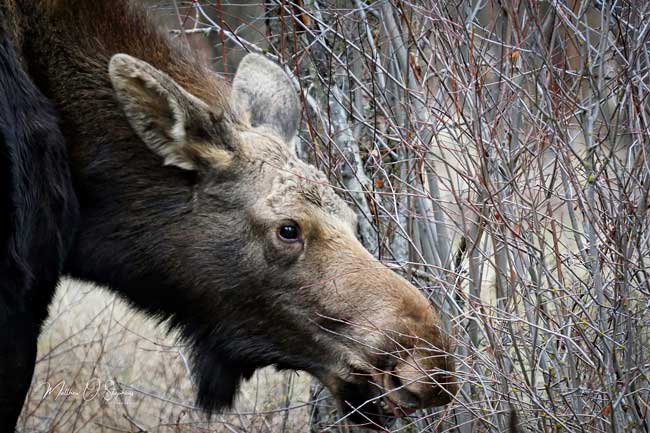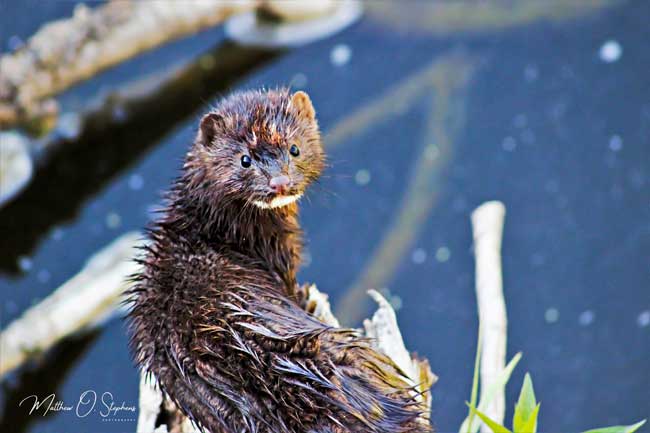article and photos by Matthew O. Stephens
CHENEY – People wanting to find a great place to hike with a decent chance of viewing wildlife can venture out to Turnbull National Wildlife Refuge, just six miles south of Cheney.
As with many other regions in Washington, forces of nature from a very long time ago all played a part in the development of the area as we know it.
According to the U.S. Fish and Wildlife Service a combination of ancient volcanic activity, glacial movements, and incredibly powerful floods helped to form the area known as the channeled scablands.
Established in 1937, the refuge has a lasting beauty that is enhanced by the trees, shrubs, and wildflowers visitors can enjoy while hiking along the many trails that dissect the landscape.
Turnbull has always had a unique ecosystem within the channeled scablands that cover much of eastern Washington. According to statistics from the U.S. Fish and Wildlife Service the refuge now spans over 20,000 acres providing various environments like wetlands, prairies, and forested woodlands.
Throughout the acreage, an abundance of diverse wildlife can also be found. Birds, fish, reptiles, amphibians, and numerous mammal species can be seen at Turnbull. The refuge has become an active hotspot for birdwatchers, and moose sightings have become more frequent as well.
30 years ago a prescribed burn in Turnbull reintroduced the willow to the area which happens to be a food that moose tend to prefer. This led to the first moose sighting at Turnbull in 1994, and now there are dozens of reported moose sightings annually in the refuge.
According to an April 1 press release, Fish and Wildlife were to conduct some prescribed burns this year as well to help stimulate the re-growth of certain plants in certain areas, and for general refuge management purposes.
Large groups of elk can also be viewed during the cooler fall and winter months, and some sources say a herd numbering 400 elk inhabit the refuge.
Lucky hikers in the right season may come across a coyote, river otter, or even an American Mink.
Many of the birds are migratory and can be seen seasonally as they come and go, but there are also a large number of birds (over 120 species) that nest in the refuge.
Spring and summer are the best seasons to see the majority of the migratory birds as they are in the region during the warmer months.
Some of the more sought out birds to be found are the Trumpeter Swans, Great Horned Owls, Blue Herons, American Goldfinch, and the American White Pelican.
Some of the more common species include the Red-Winged Blackbird, Yellow-Headed Blackbird and Western Bluebird along with a few varieties of woodpeckers. Waterfowl include American Coots, Cinnamon Teal ducks, Mallards and several other types of fowl.
Although the Redhead duck is noted as the most common with over 500 breeding pairs living on the refuge. The Fish and Wildlife service attributes the thriving species to the permanent wetlands that were restored and how they have become a key breeding habitat for this species.
A nicely detailed map of the refuge can be found on the U.S. Fish and Wildlife service website. This map shows the hiking trails and driving route with accurate descriptions and points out various areas of interest which can be quite beneficial for visitors not familiar with the refuge.
According to the fish and wildlife services, the refuge is always working on projects to better understand and preserve the Channeled Scabland ecosystem.
These projects look to incorporate and support as much of the local area as well, and another unique point about Turnbull is the fact that a research facility has been running since 1973 when the Fish and Wildlife Service created a working partnership with Eastern Washington University. This is the only partnership of its kind in the national refuge system.
Hikers of all ages and skill levels can find a multitude of trails throughout the refuge and is topped off by a five-and-a-half-mile auto route for families to enjoy.
The headquarters building can also provide curious visitors with information and data regarding the refuge and can provide a learning experience for all age groups.
People interested in becoming more directly involved with the refuge can sign up for any of the volunteer opportunities Turnbull facilitates. According to Fish and Wildlife, the refuge receives over 18,000 volunteer hours annually from over 800 individual volunteers.
These opportunities can get visitors involved with everything from trail maintenance to wildlife research to habitat restoration.
Turnbull also has a very extensive educational reach, and for over 25 years has worked with over 8,500 students to teach them about different aspects of the refuge.
According to fish and wildlife Turnbull’s Environmental Education program is an integral part of refuge operations and promotes the development of a knowledgeable and informed population, who are proactive in protecting and restoring natural ecosystems.






